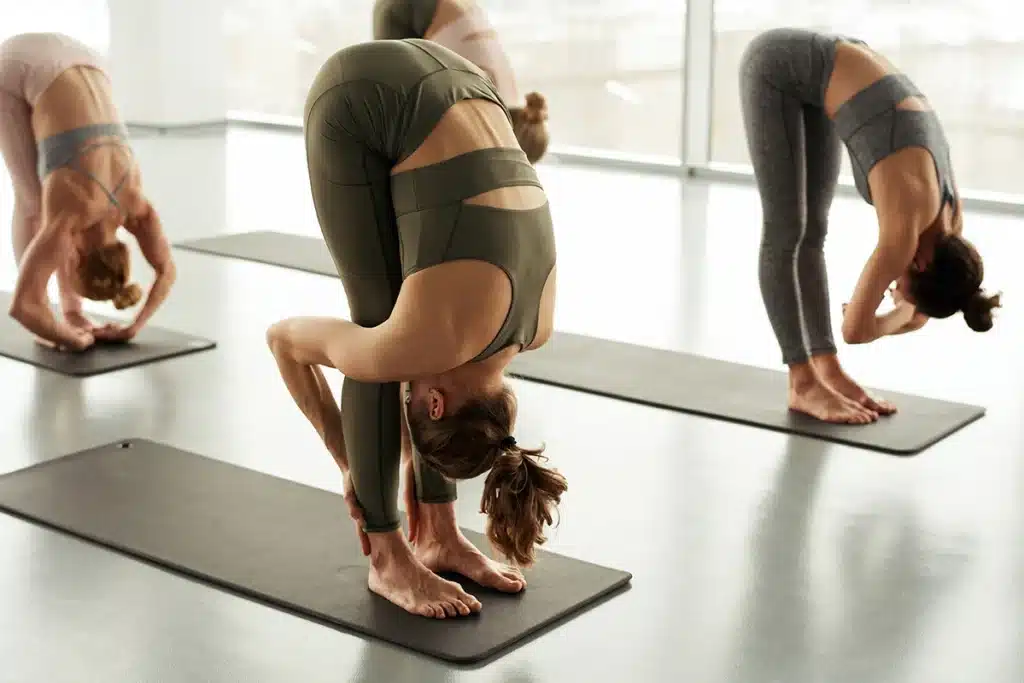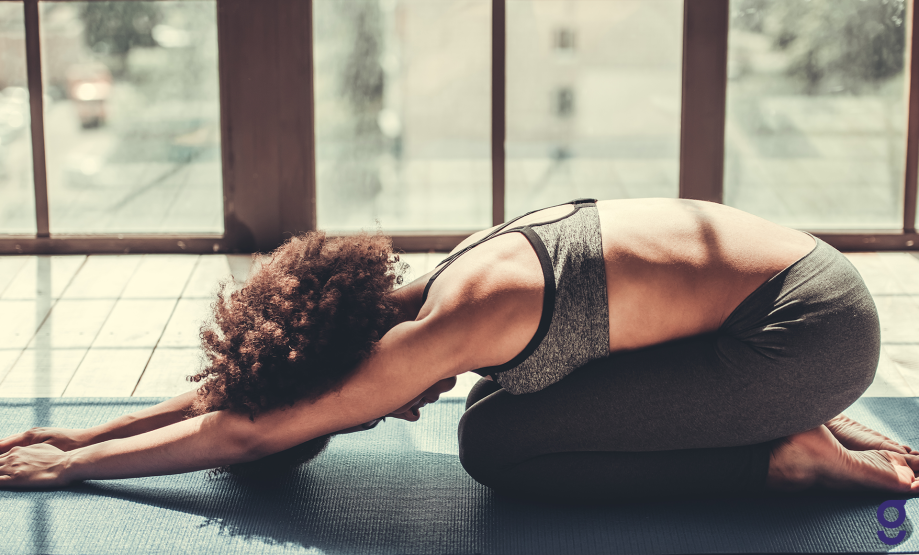Back pain is something just about everyone deals with at some point, no matter their age or what they do in life. Whether it’s caused by poor posture, prolonged sitting, heavy lifting or stress, back pain can significantly impact your daily life. Luckily, yoga gives us a simple, natural way to ease pain, support healing and keep those back problems from coming back. We’ll walk through a yoga routine designed to relieve back pain and help you build the strength and flexibility needed to keep your back safe for the long run in this blog.
Understanding Back Pain and Yoga
Back pain often arises from muscle imbalances, poor posture, or lack of flexibility and core strength. Yoga addresses these issues by stretching tight muscles, strengthening weak areas and promoting proper alignment. Regular practice can improve your posture, enhance body awareness and create a sense of overall well-being which helps prevent pain from recurring.

Key Benefits of Yoga for Back Pain
- Increases Flexibility: Yoga poses help stretch the muscles of the back, hips, and legs, reducing tension and stiffness that can contribute to pain.
- Builds Strength: Strengthening the core, lower back, and other supporting muscles can stabilize the spine and prevent injuries.
- Promotes Better Posture: Yoga encourages alignment and mindful movement, helping to correct poor posture that often leads to back pain.
- Reduces Stress: Stress can exacerbate back pain. Yoga is focus on breathing and relaxation techniques can help calm the mind and reduce tension in the body.
Yoga Sequence for Back Pain Relief
Here’s a gentle yoga sequence designed to relieve back pain and prevent future discomfort. Remember to move slowly, listen to your body, and breathe deeply throughout the practice.
- Child’s Pose (Balasana)
- Begin in a kneeling position with your big toes touching and knees spread wide.
- Lower your torso between your thighs and extend your arms forward, resting your forehead on the mat.
- Breathe deeply and allow your lower back to relax. Hold for 1-2 minutes.
- Cat-Cow Pose (Marjaryasana-Bitilasana)
- Come onto your hands and knees in a tabletop position. Align your wrists under your shoulders and your knees under your hips.
- Inhale, arch your back, and lift your head and tailbone toward the ceiling (Cow Pose). Exhale, round your spine, tuck your chin to your chest, and draw your navel toward your spine (Cat Pose).
- Repeat for 5-10 breaths, moving fluidly with your breath.
- Downward-Facing Dog (Adho Mukha Svanasana)
- From the tabletop position, tuck your toes under and lift your hips toward the ceiling, coming into an inverted “V” shape.
- Keep your knees slightly bent if needed, and focus on lengthening your spine. Hold for 5-7 breaths.
- Standing Forward Bend (Uttanasana)
- Stand with your feet hip-width apart. Hinge at your hips and fold forward, letting your head and arms hang down.
- Bend your knees slightly if necessary to relieve any tension in the lower back. Hold for 5-7 breaths.
- Sphinx Pose (Salamba Bhujangasana)
- Lie on your stomach with your legs extended and your elbows under your shoulders.
- Press your forearms into the mat, lift your chest, and keep your lower back relaxed. Hold for 5-10 breaths.
- Bridge Pose (Setu Bandhasana)
- Lie on your back with your knees bent and feet hip-width apart.
- Press into your feet, lift your hips, and engage your glutes and hamstrings. Hold for 5-7 breaths.
- Supine Twist (Supta Matsyendrasana)
- Lie on your back, bring your knees to your chest, and gently lower them to one side while keeping your shoulders on the mat.
- Extend your arms out to the sides and turn your head in the opposite direction. Hold for 5-7 breaths on each side.
- Reclining Bound Angle Pose (Supta Baddha Konasana)
- Lie on your back and bring the soles of your feet together, allowing your knees to drop open.
- Place your hands on your belly or stretch them overhead. Hold for 1-2 minutes.
- Corpse Pose (Savasana)
- End your practice by lying flat on your back, arms at your sides, and palms facing up.
- Close your eyes and focus on your breath. Stay in this position for 3-5 minutes to relax completely.

Tips for Practicing Yoga Safely with Back Pain
- Consult Your Doctor: If you have a history of back issues or severe pain, consult a healthcare professional before starting a new exercise routine.
- Listen to Your Body: Avoid any poses that cause sharp pain or discomfort. Modify or skip poses if needed.
- Use Props: Utilize yoga props like blocks, straps, or bolsters to support your body and maintain proper alignment.
- Focus on Breathing: Use deep, mindful breathing to stay relaxed and connected during your practice.
Conclusion
Yoga can be a powerful tool for relieving back pain and preventing it from recurring. By incorporating these poses into your routine, you can strengthen your back, increase flexibility and promote better posture. Remember to practice regularly and listen to your body’s needs. With time and consistency, you may find lasting relief and a stronger, healthier back.

